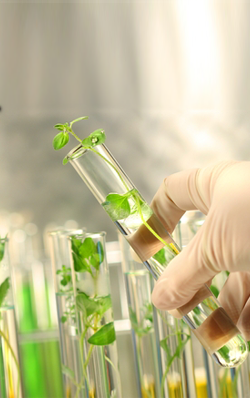
Genetic modification is the most popular method for improving the characteristics of crop plants, such as; immunity, size and taste. All the microorganisms have a genetic material called DNA inside the cells, which contains a precise set of information for their growth and development.
This DNA is separated into small sections called genes and these genes can be moved from one organism to another by genetic engineering.
Genes are found in groups, and randomly inserted genes have the ability to alter the functions of native genes. Such type of disruption is more common, that sometimes these gene groups fail to work. This eventually will not give an anticipated result.
Such type of genetic modification produces unforeseen toxins. Usually the plant breeders will not go for designing a new gene, which will be an expensive and time consuming process. So they go for using the same gene for other genetic modification purpose.
Different types of GM crops are developed;
1. Some are genetically engineered to resist strong herbicides
2. Some are modified to produce bacterial toxins which can destroy the pests.
3. Some are engineered to ripen more slowly with more immunity against plant diseases.
4. Some research works are still going on to produce genetically modified plants for producing oil for cosmetics.
5. Some will cultured for nutritional value.
6. Some plants for pharmaceutical purpose.
Methods For The Development Of Genetically Modified Crops
A. Biolistic method (Particle gun)
1. In this method small particles of gold or tungsten are used as carriers of the DNA.
2. Theses DNA bounded metal particles are subjected to high pressure and shot into plant tissues or single plant cells.
3. Inside the nucleus of the cells, these DNA gets detached from the tiny metal particles and incorporated into the plant genome.
4. The main disadvantage of biolistic method is that it will cause a serious damage to plant cells and tissues.
5. Wheat and maize are few examples of crops which can be genetically modified by biolistic technology.
B. Agrobacterium tumefaciens mediated transformation
1. Agrobacterium is a natural plant parasite having the ability to transfer their genes to a host plant.
2. There it establishes an appropriate atmosphere for themselves.
3. These transferred genes will make the plant to proliferate the cells near soil level, called Crown gall.
4. The genetic information of this Crown gall is encoded in an extra chromosomal circular DNA called plasmid.
5. This bacterial plasmid with T-DNA (Transfer DNA) can be replaced with a desired foreign gene.
6. It is then transported to the host plant.
7. Potatoes, tomatoes, etc., can be genetically modified through Agrobacterium tumefaciens mediated transformation.
Concerns about GM food
1. The results of genetic modification may be unpredictable.
2. Consumption of such type of GM foods may produce new proteins in the humans cause allergic reactions and other health issues.
3. Due to the difficulties and cost involved in conducting safety tests, the safety part of the GM crops or foods are considered by comparing its equivalence to the same non GM crop.
4. Many GM crops can impart resistance to commonly used antibiotics and same genes can pursue from food to normal flora in humans and animals.





